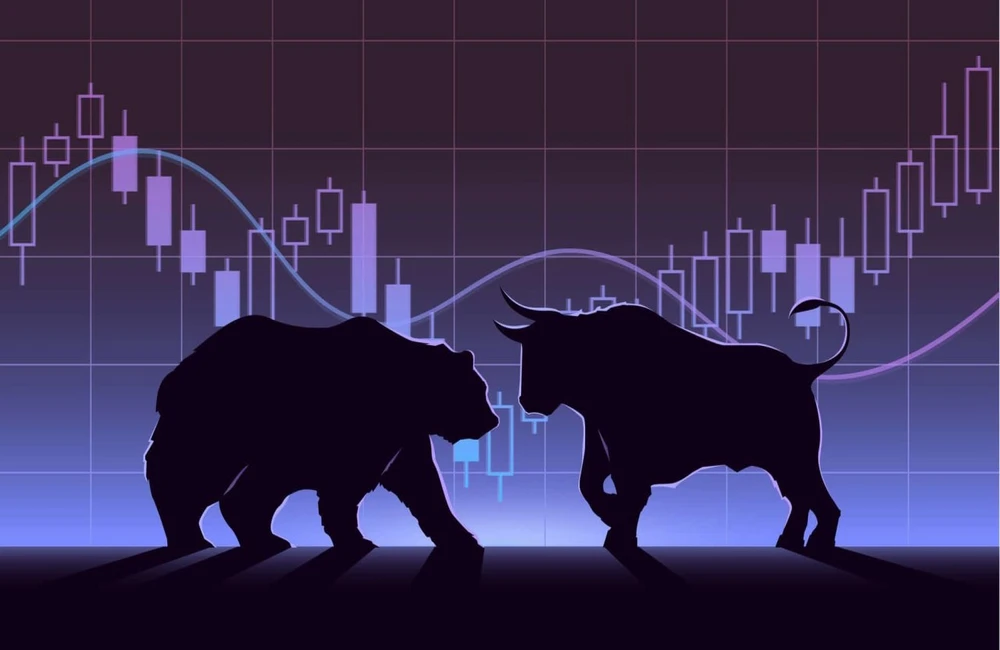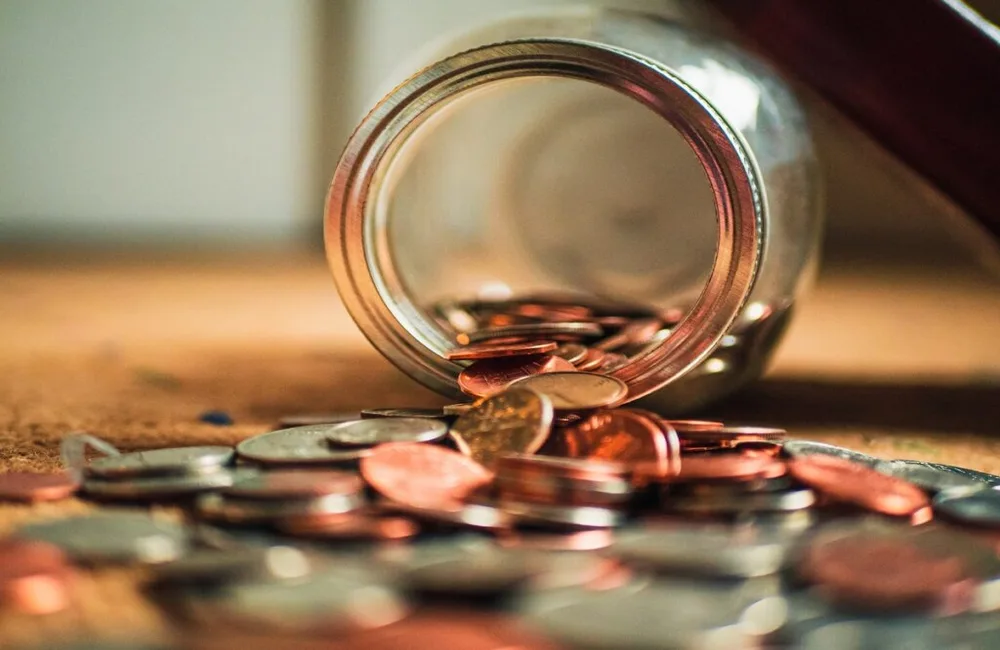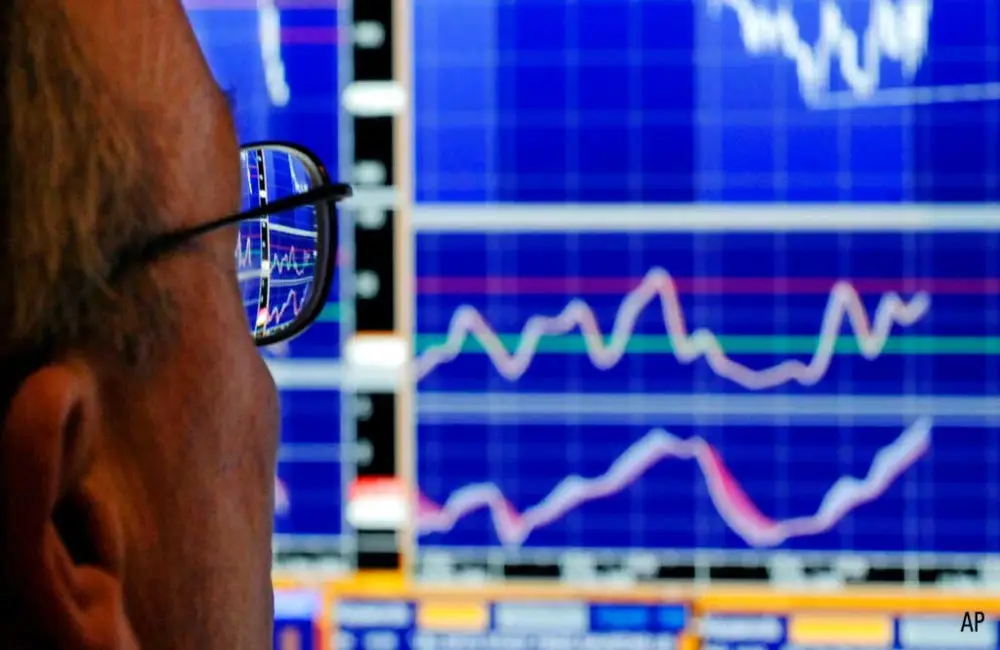ASX futures were also up 38 points or 0.5% at 7457 at 8.00 am on Friday, seen as a good sign for the opening of the day.
US stocks, which had also fallen earlier in the week, were rallying Thursday afternoon after opening lower. The Dow Jones Industrial Average gained 0.25 percent, and the S&P 500 climbed 0.4 percent and the Nasdaq Composite was up 0.1 percent.
Tuesday’s and Wednesday’s selloff was rooted in fears of Fed policy, but the rally on Thursday cut through all of that. On Tuesday, Fed Gov. Lael Brainard who had been one of the fiercest opponents last year against the idea of prematurely withdrawing stimulus spooked investors by remarking that the central bank is prepared to take steps that will temper inflation over the course of the year. The release of Fed meeting minutes on Wednesday showed that central bankers had considered raising rates by a half-percentage point at their March meeting, more than the quarter-point increase with which they went ahead.
This week, the hawkish sentiment grew when Federal Reserve Bank President James Bullard argued that rates may need to rise above 3% next year in comments on Thursday. Two of Bastion’s colleagues at the Chicago and Atlanta Feds separately supported higher rates as they noted the need to observe how the economy plays out.
Locally, S&P/ASX 200 finished 0.6% weaker at 7442.8 as continued weakness in technology stocks weighed on the benchmark. At the same time, Australia’s trade surplus in February fell more than expected after imports rose sharply.
The technology sector fell 3.4%, and consumer discretionary stocks shed 1.6%. Tech stocks WiseTech Global, Square and Xero lost 6.6%, 4.3% and 2.9%, respectively.
Travel stocks Webjet and Flight Centre fell 2.9% and 2.7%, respectively.
Australian fund manager Magellan was the day’s biggest winner, up 11% after the pace of its outflows appeared to have slowed.
In commodities, iron ore fell back under US$160, down 3.2% to US$155.05 a tonne, gold futures were down 0.15% at $1,934.80 and Brent Crude oil down 0.5% at US$100.58 per barrel.
US bonds fell for a fifth day as investors remained jittery over government debt. The yield of the US 10-Year Treasury Note is trading at 2.66%, marking the highest level in a little over three years. The Australian 10-year bond yield fell to 2.91%. Yields rise when prices fall.
The Australian dollar was worth 74.79 US cents at 8.00 am Friday, from 74.77 at the previous close. The WSJ Dollar Index, which measures the US dollar against a basket of 16 others, advanced to 92.18.
Asia
China stocks finished the session lower, building on a lackluster performance since the market reopened after a two-day holiday earlier this week. The Shanghai Composite Index fell 1.4%, and the Shenzhen Composite Index was down 1.9%. The worst was the ChiNext Price Index, closing 2.1% lower. The property sector fell the most against a backdrop of weak sales data in March. China Vanke, one of the country’s biggest developers, fell 1.5 percent after the company reported a 34 percent drop in contracted sales for March earlier today.
Hong Kong stocks finished lower, with the market still losing the strength. The benchmark Hang Seng Index slid 1.2%, following losses on Wall Street overnight. Consumer companies suffered the most, with restaurant operator Haidilao slumping 7.2% and Budweiser Brewing dipping 3.8%. That signal added to pressure on tech stocks, with profit-taking pressure emerging in shares that have made strong gains recently after a turnaround in investor sentiment spurred by Beijing’s support for US-listed Chinese stocks.
The Nikkei Stock Average fell 1.7% as fears mounted over the US Fed's pace of tightening, and elevated corporate-borrowing costs. Shares of aviation stocks were down, with Japan Airlines dropping 2.6% and ANA Holdings losing 2.0%. Investors will likely stay fixated on developments surrounding China’s Covid-19 outbreak, alongside Russia’s war on Ukraine and the impact on commodity prices.
Europe
European shares ended in the red after investors digested minutes from the Federal Reserve’s latest meeting and kept a close eye on the ongoing Russia-Ukraine conflict. The Stoxx Europe 600 was down 0.2 percent, the FTSE 100 was down 0.5 percent, the German DAX fell 0.5 percent and the French CAC 40 slipped 0.6 percent.
The minutes from the Federal Reserve outlined plans to reduce the balance sheet by $95B a month with a possible May start date, and investors are still digesting it, CMC Markets analyst Michael Hewson writes in a note. “Peace talks between Russia and Ukraine do not seem to be going anywhere in the short term, given the Kremlin has complained the U.S. arming Ukraine isn’t encouraging progress on talks,” he says.
In London, insurer Aviva PLC fell the most, closing down 4.9%, while Barratt Developments PLC fell 4.3%.
North America
US equities gained, and the yield on the 10-year US Treasury note reached its highest level in three years as investors absorbed the prospect of more aggressive monetary tightening from the Federal Reserve.
Stocks, which had dropped earlier this week, bounced back on Thursday afternoon after starting the day in the red. The Dow Jones Industrial Average gained 0.25 percent, the S&P 500 climbed 0.4 percent and the Nasdaq Composite ticked up 0.1 percent.
Yields in Treasury markets: the yield on the 10-year US Treasury note was at 2.654% in early Asian trade, up from 2.606% Wednesday. That is the highest level since March 6, 2019. Yields rise as prices fall.
Tuesday’s afternoon rally, however, was “tactical” rather than spurred by any particular news, said Asbury Research strategist John Kosar. The S&P 500 and the CBOE’s Volatility Index both reached important technical levels after noon and both turned the same way at the same time, he said.
“Money first, market second, then headline,” Mr. Kosar said. What the next few days produce will determine for investors whether this was a real turnaround or just a temporary pause, he said.
Thursday’s rally upended a two-day selloff driven by fears about Fed policy. On Tuesday, Fed governor Lael Brainard – one of the strongest advocates last year against withdrawing stimulus too soon – made investors jumpy when she said the central bank would take action this year to reduce inflation. On Wednesday, the release of minutes from the Fed’s March meeting brought news that central bankers had discussed raising rates by a half-percentage point at that meeting, larger than the quarter-point increase they ultimately implemented.
“I do think we’ve got to move forthrightly in order to get the policy rate up to the right level to deal with inflation that we’ve got around in front of us,” Federal Reserve Bank of St. Louis President James Bullard told reporters after a speech Thursday.
It was seemingly the last straw for investors selling this week who had not realized that the Fed is, in fact, changing policy despite its been giving cues about such intentions for months, several of the analysts said.
“It’s like the market woke up and had an epiphany that the Fed is tightening,” said Stifel equity strategist Barry Bannister.
Prior to this week, the US stock market had been engaged in a brisk rally that had allowed indexes to erase much of the losses tagged in 2022. The rebound, which started in mid-March, appeared to brush off problems like the war in Ukraine, rising Covid-19 cases in China and surging inflation that could exacerbate supply-chain bottlenecks. Even after sliding 2.2% over the last two sessions, the S&P 500 was off only 6% for all of 2022, as of Wednesday’s closing prices, a recovery from its more than 12% loss at its low this year.
Other investors just wouldn’t give the Fed credit for moving aggressively, said Thomas Kee, the writer of the Stock Traders Daily newsletter. “It was that old lagging kind of psychology into believing that the [Fed is] never going to hurt the market,” he said.
But he added that he was not seeing a lot of risk the selloff would go further, and that he expected equities to bounce back. “The markets have short memories,” he said.
The recent stabilization in some commodities prices has been a boon for the stock market, analysts say. US crude oil edged down 0.2% Thursday to $96.03 per barrel. That is a notch above where oil was before Russia invaded Ukraine but down sharply from the close to $130 price hit last month.
In economic news, a separate report Thursday showed that new applications for US unemployment assistance last week dropped to near a 54-year low. First-time claims for jobless benefits, a proxy for layoffs, dropped to 166,000 for the week ended April 2, from a revised 171,000 the previous week, the Labor Department said. Economists slated by The Wall Street Journal had expected 200,000 new claims.
Next week will usher in first-quarter earnings season. Much attention may be paid to results, which will likely play a heavy hand in determining the next phase of the US stock market, many investors say. Analysts are anticipating that profits for S&P 500 companies increased 4.6% during the period compared with a year earlier, according to FactSet data.
On the individual stock front, HP jumped 15%, or $5.15, to $40.06 after Warren Buffett’s Berkshire Hathaway revealed in a filing Wednesday that it has purchased more than 11% of the computer-and-printer giant. That holding, based on HP’s closing price on Wednesday, was worth over $4.2 billion. Berkshire’s Class B shares rose 0.5 percent, or $1.93, to $346.51.
Banks have been especially sensitive to inflation and monetary policy; on Thursday, financials were some of the early losers on the S&P 500, but they gained ground as the day went on. The KBW Nasdaq Bank Index fell 0.7%, marking its seventh down day in a row, tying its longest losing streak since 2018. Bank of America dropped for a ninth straight session.
Twitter was down 5.4 percent, or $2.74, at $48.03 as investors continued to sift through the implications of Tesla’s Chief Executive, Elon Musk, buying a stake in the social-media company and joining its board.
























